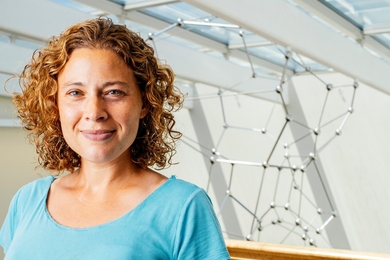Neuroscientists at the Picower Institute for Learning and Memory at MIT report in the June 7 early online edition of Science that they have identified for the first time a neuronal mechanism that helps us rapidly distinguish similar, yet distinct, places. The discovery helps explain the sensation of déjà vu.
The work could lead to treatments for memory-related disorders, as well as for the confusion and disorientation that plague elderly individuals who have trouble distinguishing between separate but similar places and experiences.
Forming memories of places and contexts in which episodes occur engages a part of the brain called the hippocampus. Study co-author Susumu Tonegawa, Picower Professor of Biology and Neuroscience, and colleagues have been exploring how each of the three hippocampal subregions--the dentate gyrus, CA1 and CA3--contribute to different aspects of learning and memory.
Tonegawa, a Howard Hughes Medical Institute investigator and a frequent world traveler, described his own occasional experience of finding the airport in a new city uncannily familiar. This occurs, he said, because of the similarity of the modules--gates, chairs, ticket counters--that comprise airports worldwide. It is only by seeking out unique cues that the specific airport can be identified, he said. "In this study, we have revealed that learning in the dentate gyrus is crucial in rapidly recognizing and amplifying the small differences that make each place unique," Tonegawa said.
In addition to Tonegawa, authors include Picower Institute research scientist Thomas J. McHugh; former MIT postdoctoral associate Matthew W. Jones; Matthew A. Wilson, Picower Scholar and Professor; and colleagues from the University of California at Los Angeles and Beth Israel Deaconess Medical Center in Boston.
Overlapping blueprints
In this study, the researchers used a genetically altered mouse to pinpoint how the dentate gyrus contributes to the kind of pattern separation involved in telling the difference between new and old spaces.
Researchers believe that a set of neurons called place cells fire to provide a sort of blueprint for any new space we encounter. The next time we see the space, those same neurons fire. Thus we know when we've been somewhere before and don't have to relearn our way around familiar turf.
But if we enter a space very similar to one we have seen before, a new but overlapping set of neurons creates the blueprint. When there is enough overlap between the two sets, we experience an eerie feeling of déjà vu--a French phrase that literally means, "already seen."
As we age, or as neurodegenerative disease such as Alzheimer's advances, it becomes difficult to form unique memories for similar yet distinct places and experiences, leading to the confusion that afflicts some elderly individuals.
Forgetting fear
In experiments with mice genetically engineered to lack a certain gene in the dentate gyrus, Tonegawa and colleagues pinpointed the signaling pathway underlying the recall of specific places.
Different sets of mice were placed in two similar chambers, one of which gave them a mild foot shock. After three days, the mice began to freeze in fear in both chambers, even the one in which they had never been harmed.
Within two weeks, the normal mice learned to associate only one chamber with the foot shocks while recognizing the second as safe. The genetically engineered mice "had a significant but transient deficit in their ability to distinguish similar contexts," McHugh said. "This study shows that plasticity--the ability to change in response to experience--in the dentate gyrus contributes to spatial learning and fine-tuning pattern separation."
This work was supported by the National Institute for Mental Health and the National Institutes of Health.






